Macro Calculator

This free, easy-to-use macro calculator gives you your optimal macronutrients and calories. It serves as a weight loss or muscle gain calculator for both women and men.
Combine with macro counting, flexible dieting, or IIFYM to reach your goals faster.
How to calculate your macros for fat loss
The foods we eat are made up of three macros (macronutrients). These are carbohydrates (carbs), protein, and fat.
Chicken is high in protein but has no carbs; rice is high in carbs but has very little fat or protein.
The three macronutrients provide the body with energy and raw materials for growth and repair.
By calculating the appropriate daily calorie amount for you, we can then break this down into the best macronutrient ratios to achieve weight loss.
The calculator is based on sound science, combined with data from years of coaching hundreds of successful clients.
What is a good macro ratio for fat loss or muscle gain?
Your macros should be based on your Total Daily Energy Expenditure (TDEE) and your goals.
The calculator defaults at the best macro ratio proven to work for most people.
This ratio is:
- 30% fat
- Protein is 0.65 grams per pound of body weight,
- The remainder is carbs.
Depending on your goal, this will be either a calorie deficit or a surplus.
You can go further and make more adjustments: Perhaps you’re an extreme endomorph and do better with fewer carbs. Or perhaps you have one kidney and need to eat less protein.
You can fine-tune your results for you with a bit of math. See how to change your macros here.
MACRO COUNTING
- 140 page step-by-step guide.
- Achieve fat loss without starvation.
- Individually tailored to your body composition.
What is a good protein ratio?
Rather than a percentage, proteins are based on your body weight.
Our calculator has three settings:
- Moderate adjusts the ratio to 0.65 grams per pound of body weight.
This is appropriate for sedentary individuals or people with higher body fat percentages. - High is for active people with moderate strength training and an average body fat percentage.
- Maximum will set the ratio to 1 gram per pound.
This amount is good for bodybuilding and gaining muscle mass. You must be doing intense training.
Find out how to fine-tune your protein ratios when counting macros
Fat macro ratio
Set fat at 30% of daily energy expenditure.
Most people do very well with this amount of fat. See more about choosing the best macro fats. Because of high-fat diets like keto, many people are now eating more fat than they need to.
Carbohydrate macro ratio
Once you’ve calculated protein and fat, the remainder of your daily calories should be from carbohydrates.
Carbs fuel your body and workouts and are the body’s preferred energy source.
If you are coming from a low-carb background, this may seem high. However, according to respected nutritional research, this is a moderate amount of carbs.
If you are eating according to your TDEE, the notion that carbs cause weight gain or stop fat loss is incorrect.
Using as a Calorie Deficit Calculator
As a weight loss calculator, this tool establishes a safe calorie deficit only.
The Lose option puts you in a 20% calorie deficit, promoting safe, steady weight loss.
The best macro ratio for body recomposition
If you want to recompose your body (lose fat and gain muscle simultaneously), then use the body recomposition calculator.
Macro ratio for maintenance
The Maintain button shows you the macro levels to maintain your current weight.
This is great if you have lost weight and don’t want to gain it back.
Macro ratio for muscle gain
The Gain button puts you in a 20% calorie surplus.
The macro breakdown is designed to build muscle fast in conjunction and must be combined with a comprehensive weight training program.
It can also be used by people who are underweight.
TIP: Try starting with the maintenance goal and then gradually increase calories from there if you want lean muscle gains.
Calculating macros using your body fat percentage
The calculator uses your body weight to determine calories and macros.
However, you can obtain superior results by using your body fat percentage. The calculator allows you to choose which method; Normal for body weight, Lean Mass for fat percentage.
When to choose the Lean Mass Formula
If you are lean (have a low body fat percentage), choose the Lean Mass formula, and enter your body fat %.
If you are classified as obese and have a lot of weight to lose, the lean mass formula is superior. You can read more about macro counting and obesity.
Help? Calculate your ideal body weight or get an assessment of your body fat percentage.
Why the difference? Muscle cells burn more calories than fat cells, so the more accurately we measure this, the better your results will be.
How to calculate macros per meal
Once you’ve calculated your daily macros in the calculator, you can break this down into meals.
Choose from 2 to 6 meals per day to see the macro ratio you can track for each meal. For some people, this is easier, but for others, this is too much detail.
Do what works for you.
Meal Plans
See a 5-day macro-based meal plan. It includes three meals and two snacks per day.
Macro calculator activity level settings
A higher activity level means a higher daily calorie goal.
For example – if you maintain your weight at 2,000 calories per day, adding vigorous daily exercise means you need more calories to maintain your weight.
If you are sedentary and trying to lose weight, adding exercise will increase your daily calorie goal.
The idea seems counter-intuitive, but more energy is required to fuel your workouts. More workouts lead to increasing metabolism; therefore, more fat is burned!
Undereating is one of the leading causes of the weight loss plateau.
So many of our clients previously “hit the wall” with dieting. They would continually reduce calories, stop losing fat and gain weight when they eat a little more.
Macro counting defeats this by prescribing the right food and calorie levels.
Which activity level do I choose?
- Sedentary: Just regular everyday activity like a bit of walking, a couple of flights of stairs, eating, etc.
- Light: Any activity that burns an additional 200-400 calories (females) or 250-500 calories (males) over your sedentary amount.
- Moderate: Any activity that burns an additional 400-650 calories (females) or 500-800 calories (males) more than your sedentary amount.
- Extreme: Any activity that burns more than 650 calories (females) or more than 800 calories (males) in addition to your sedentary amount.
Other options for determining your calorie burn
- Use our calories burned calculator – it accurately assesses over 380 activities.
- Use a fitness tracker – like a Fitbit or Apple Watch (note that they can overestimate calorie burn).
- Use a suitable app – like MapMyFitness
Why should I eat more when I exercise more?
High physical activity not fueled with enough calories will lead to muscle catabolism (breakdown of muscle fiber).
This lack of nutrition could stall your weight loss, so eat up if you love to exercise!
I’ve got my macros – now what?
Once you’ve identified your target daily macros, you must determine the macros in all the foods you eat.
By tracking them daily, you can reach your recommended macro targets that encourage fat loss, muscle gain, or whatever your goal may be.
You can learn more about the macro counting system and the flexible dieting philosophy. Many people use an app like Myfitnesspal to track macros.
For more specifics on what to eat – see a sample macro meal plan or a list of macros for familiar foods.
I've helped 14,000+ people lose thousands of pounds by tracking their macros.
Choose either my self-guided program or let me coach you.
Learn how to count macros in under 60 minutes
- Instant download.
- 140+ page ebook + extensive bonuses
- Uncover the techniques my most successful clients use.
References
- Mifflin, M. D., St Jeor, S. T., Hill, L. A., Scott, B. J., Daugherty, S. A., & Koh, Y. O. (1990). A new predictive equation for resting energy expenditure in healthy individuals. The American Journal of Clinical Nutrition, 51 (2), 241-247. Link
- McArdle, W. D., Katch, F. I., & Katch, V. L. (2010). Exercise physiology: nutrition, energy, and human performance. Lippincott Williams & Wilkins. Link
- Jequier, E. (1994). Carbohydrates as a source of energy. The American journal of clinical nutrition, 59(3), 682S-685S.
- Lemon, P. W., Tarnopolsky, M. A., MacDougall, J. D., & Atkinson, S. A. (1992). Protein requirements and muscle mass/strength changes during intensive training in novice bodybuilders. Journal of Applied Physiology, 73(2), 767-775. study abstract link
- Grundy, S. M. (1999). The optimal ratio of fat-to-carbohydrate in the diet. Annual review of nutrition, 19(1), 325-341. abstract
- Conlin, L.A., Aguilar, D.T., Rogers, G.E. et al. Flexible vs. rigid dieting in resistance-trained individuals seeking to optimize their physiques: A randomized controlled trial. J Int Soc Sports Nutr 18, 52 (2021). https://doi.org/10.1186/s12970-021-00452-2
2,067 Comments

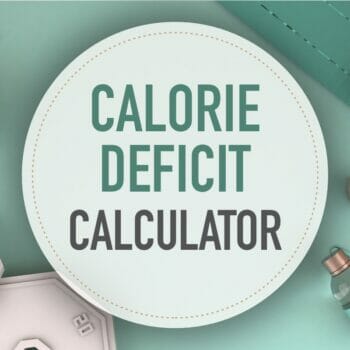 Calorie Deficit Calculator
Calorie Deficit Calculator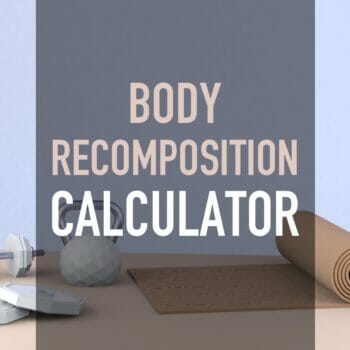 Body Recomposition Calculator
Body Recomposition Calculator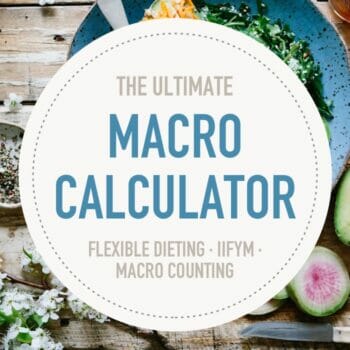 Macro Calculator
Macro Calculator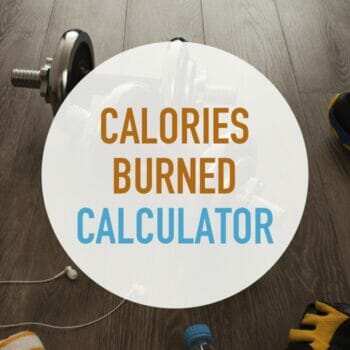 Calories Burned Calculator
Calories Burned Calculator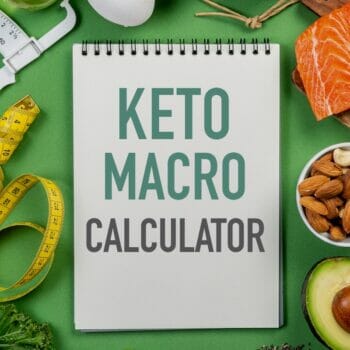 Keto Macro Calculator
Keto Macro Calculator
I’m 59 year old female. I cross fit 3 or 4x a week and I run 3x a week. Sometimes I’ll do a double, run in the morning and CF in the evening. I was on Paleo since January but because I distance run I wasn’t getting enough carbs, so now I’m 70% Paleo and 30% not I completed the NYC marathon in November so I had to make sure I was getting enough carbs. But I think I’m gaining weight because of this diet. I’m 135lbs, 5’4″. I need to be 10lbs lighter. The calculator has me at 1626 calories, 193g carbs, 112g protein and 45g fat. Because of my age and gender I know I have to reduce calories just to maintain but I’m not sure if this is enough calories. Should I eat more the day before a long run? I’m going to half marathon training next week so I want to make sure I’m getting enough fuel.
I’m not the best person to answer this, but I know from friends who run, that they do need to carb up prior to a long run. Else they run out of steam halfway thru the run.
For the level of activity you are doing, your calories seem low.
I’m interested in what formula you guys are using for this calculator concerning daily energy expenditure? When calculating DEE from the paper you cited (Mifflin, et. al), there is approximately a consistent 267 calorie difference. This is assuming Sedentary and Maintenance standards are used.
It is the Mifflin et. al formula. The difference you are noticing is sedentary vs BMR/TDEE. So… if you did nothing but lie in bed all day and night you get the TDEE (you cannot select it on the calculator above).
However an activity level of SEDENTARY adds more to the equation (~20%). This is normal for most people. Get up, go to work, walk from the car to walk, go to lunch, etc, etc….
Makes perfect sense. Thanks for the clarification!
I have tried this calculator and your other full guide with self calculation and there are over 500 calories difference for the same goals. How do I know which to believe if any?
The TDEE (from the guide) and what you get for MAINTAIN (on this calculator) should be very close. What you then decide to subtract for your weight loss goals are up to you.
The guide says 300-500. This calculator uses a far more refined model that’s based on your individual stats. However for you to come up with 500 cals difference is odd. The calculator has a more accurate formula. The guide is simplified down.
I see, I did the maintain body weight formula on both and there were just over 500 difference. Perhaps my spreadsheet was set up incorrectly I’ll have another go today however I’ll take the calculator as having a more bespoke result as the simplified formula. Many thanks for the article and reply. Merry Christmas for tomorrow :3
What’s your advice for someone trying to loose fat while building muscle? I just had a baby 2 months ago and I’m trying to loose around 5-10lbs of tummy fat. Problem is, I’m also trying to bulk on my legs and butt. Any suggestions?
There is a lot of debate surrounding the issue of gaining muscle while losing fat. Most professional body builders undergo building and cutting stages. However, I think it can be done as long as you are eating adequate protein, lifting heavier weight to keep muscle tissue stimulated, and are in a small calorie deficit. It will just take longer than a true cutting phase, which is designed to be quicker.
Awesome, thanks!
Hello, question… I’ve had a trainer for awhile who had me on a very low calorie diet ( no longer with that trainer) Bro diet basically of tilapia and veggies with oats for breakfast. It was usually around 800 calories a day. I can’t sustain that diet any longer and I’m concerned about my metabolism as the weight is going down much slower if at all. I would like to start flexible dieting but on average calculators have me set at around 2300 cal a day. Will this drastic increase cause me to gain weight? Thank you!! (Btw, I’m 5’11, 30 and 225).
800 Cals is extremely low, and without very careful planning runs risk of nutrient deficiency. I suggest you try increasing, and monitor. The increased food will give you more energy to train and workout.
Hi, how should I measure this on food terms? I mean, protein for example, we could have chicken or fish and they would have different compositions, right? So if it says I need 139 grams per day, how much chicken should I have? Do I just weight 139 grams of it? Thank you.
Lilly
female
156 cm
63 kg
33% BF
weight lifting 3x week
I would suggest you use a good food database app like myfitnesspal. It will tell you how much protein is in the serving size of chicken, beef, etc. and keep a running tally of your macros. You can’t just weigh meat because some of the weight is due to water.
Thank you! Just downloaded the app. It’s a bit more complicated than I thought, eh? I really appreciate your help.
Help me out. If I look at my plate/meal. I eat 50% vegetables, 10%fruit, 30% protein and 10% fats…olive oil, nuts, avocado… i eat very little carbs, other than a lot of vegetables. I feel like hell when I eat carbs that are not vegetables.
Every meal is set up this way. All my meals are pretty even on calories and I eat 5-6 times a day and stay at about 2200 calories a day.
I don’t know if there is a diet name for the way I eat, this is just what makes me feel the best and I lost 225 pounds….so I kind of like the way I eat.
But am I doing something wrong, All my blood work is great, no medical problems.
How are my Macro Ratios? Am I getting what i need? Thanks
You have been doing the flexible diet leaning towards a lower carb diet. You’re macros may not fit with exactly what the calculator says but that’s ok. It’s just a guideline for people new to the diet to follow. You’re doing great with the way you are eating so keep up the good work.
This is pretty much how I eat as well and it’s very healthy and you are most likely getting what your body needs to thrive. (your weight loss and blood work attest to this) . So, don’t stress and if you want to share your weight loss story with us send me an email: ted at healthyeater.com
What would you say is the difference between moderately and very active?
Very active is someone who does intense exercise for at least an hour in duration 7 days a week.
How about 60-75 minutes intense workout( weight lefting)5 times per week?
+ 25 minutes high intensity cardio( 3 times/week)
Would u consider it moderatly or very active ?
That seems very active to me.
Thank you for ur response.
But I do cardio( high intensity) only three times/ week for 25 minutes.
Weight lefting( high intensity) five times/ week for an hour to 75 minutes.
So do u think it is very active?
I am just worried of changing my current macros.
Please help me
28 years old
Female
Weight 105
154.94 hight
The reason I want to change them because I feel so hungery eventhough I eat my fiber( about 25g/day) and my protien. I wake up every night from hunger:)
So i thought i might not eat enough!
My current macros:1339 calories( 105 p, 42 F, 135 Carbs)
Yeah it doesn’t seem like you are eating enough for your activity level. You’re body is trying to tell you that, so I would suggest listening to it and upping your macro amounts as reflected by our calculator.
calculater just reloads the page??
It’s working for me. Which browser/ device are you using?
Calculater is not showing any result, after putting in values, i click calculate macros and the page just reloads!
Apologies. There was a temporary glitch.
Haha, I put in “Very Active” and got a number ~200 calories less than my maintenance.
Was that with a goal of “Lose”? Normally I would expect suggested daily calorie intake to increase – if the setting is Very Active (compared with Sedentary).
With a goal of Maintain. Sedentary gives me a number ~1100 calories below my maintenance. No calculator can realistically account for all people and their needs. Each day, I lift for an hour, walk for an hour, do about 30 minutes of cardio, and I’m on my feet a fair amount. My BF% is pretty low too, so I’m more metabolically expensive that the calculator probably expects.
That explains it. Your stats are extreme 🙂 The formula for this calculator comes from the paper by Mifflin, St Jeor, et al. (http://ajcn.nutrition.org/content/51/2/241.abstract)
This is cited as the most reliable predictor of resting energy expenditure.
This calculcated me at 600 fewer calories than my maintenance. I am on my feet at work and I bicycle about 2-3 hours everyday, as well as walk 3 times a week for 45 minutes.
In much the same as Ryan, the amount of exercise you do puts you in a very small percentage of the population.
Another good website about flexible dieting http://www.flexibledietingblog.com